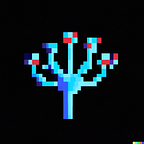Picasso Bot will outcompete the original — Here’s how
In recent years, we have seen a rapid advancement in the field of artificial intelligence (AI). From self-driving cars to virtual assistants, AI has become a prevalent part of our everyday lives. But what about its impact on the world of art and music?
As technology continues to evolve, AI is increasingly being utilized as a tool for creative expression in the fields of art and music. This new form of technology is not only changing the way we create and consume art, but it is also opening up new possibilities for artists and musicians.
AI in Art
One of the most exciting ways that AI is being used in the field of art is through the creation of generative art. Generative art is a form of art that is created by a computer program, rather than a human artist. This type of art is created by feeding a computer algorithm a set of parameters, and then allowing it to create something new based on those parameters.
One example of this is the work of Joshua Davis, an artist who has been working with generative art for over a decade. His work, which often features abstract patterns and designs, is created using a program called “Processing.” This program allows him to input certain parameters, such as color and shape, and then let the computer generate something new and unique.
AI in Music
AI is also making a big impact in the field of music. One of the most notable examples is the development of AI-generated music. This type of music is created by feeding a computer algorithm a set of parameters, such as tempo and key, and then allowing it to generate something new based on those parameters.
One example of this is Amper Music, an AI-based music composition platform. The platform allows users to input certain parameters, such as the desired mood or genre of the music, and then generates a unique piece of music based on those parameters. This technology has been used by film and game composers to create original music for their projects.
Why this is important
The use of AI in art and music has the potential to revolutionize the way we create and consume art. As technology continues to improve, it is likely that we will see more and more artists and musicians turn to AI as a tool for creative expression. This will lead to more competition and less artists needed, but it will also open up new opportunities for people to create and share their work.
In addition, AI-generated art and music has the potential to democratize the creative process. It allows anyone to create something new and unique, regardless of their artistic or musical ability. This could lead to a more diverse and inclusive art and music scene, where anyone can be a creator.
3 challenges all future artists will have to face
- Competition: As AI becomes more prevalent in the art and music industry, it is likely that we will see more and more AI-generated art and music. This will lead to increased competition for artists and musicians, as AI can create art and music at a faster and more efficient rate than humans.
- Job displacement: The use of AI in the art and music industry could potentially lead to job displacement for artists and musicians. As machines become more capable of creating art and music, there may be less need for human artists and musicians.
- Authenticity and originality: As AI-generated art and music becomes more prevalent, it will be increasingly difficult for artists and musicians to differentiate their work from that of AI. This could lead to questions about the authenticity and originality of art and music created by humans. This may also lead to a lack of appreciation and less value to the human-made art and music.
3 things every (aspiring) artist can do to be best prepared for the future
- Stay informed and educated about the latest technology and trends in the field of AI. This includes keeping up to date with new software and tools that can be used for creative expression, as well as understanding the potential implications of AI on the art and music industry.
- Develop a strong online presence. In today’s digital age, it is more important than ever for artists to have a strong online presence. This includes having a website, social media accounts, and an online portfolio. This will make it easier for potential clients and fans to find and connect with you.
- Embrace collaboration. As AI becomes more prevalent in the art and music industry, it is likely that we will see more collaboration between artists and technology. Artists should be open to working with AI and other forms of technology to create new and exciting forms of art. This could include collaborating with programmers, designers, and engineers to create something truly unique.
In conclusion, the use of AI in the field of art and music is an exciting development that is changing the way we create and consume art. It is opening up new possibilities for artists and musicians, and has the potential to democratize the creative process. While it may lead to more competition and less artists needed, it also offers new chances for people to create and share their work. As technology continues to evolve, it will be interesting to see how AI continues to shape the world of art and music.
Remember, if you read medium articles often, consider helping out the authors that do the valuable work you are able to enjoy by giving them a clap and/or sharing their stories.
